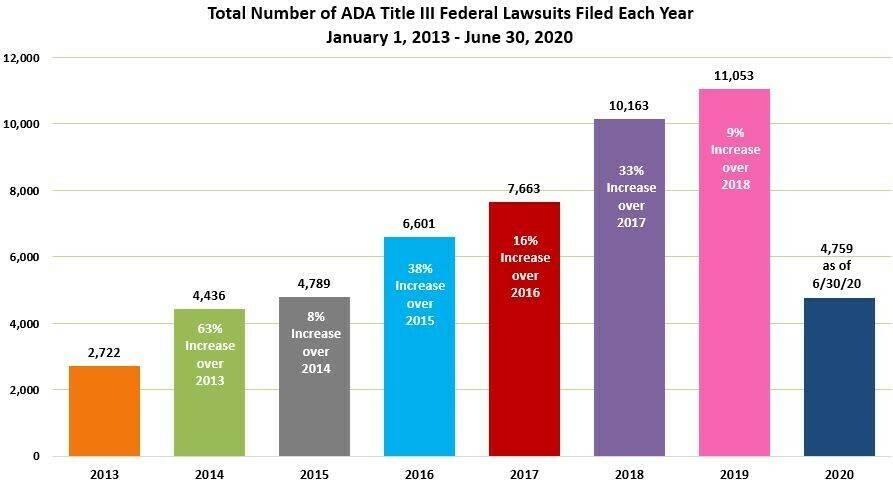Blog
Web Design + Development

Website Accessibility: The New Rules for 2021
2020’s socially distant living has had a major impact on how individuals interact. Our reliance upon digital interfaces and websites to communicate and transact has gone up significantly. It's also shone a bright light on the need to ensure online ecosystems are available and accessible to all.
The CDC reports that 26% of adults in the US have some type of disability. That’s a sizable market, with the Department of Labor listing their spending power at about $200 billion. That should not be overlooked in a time when the economy is tight and companies need to be creative to find revenue. Unfortunately, for those living with a disability, many online businesses still prove too difficult to successfully navigate—and SOME ARE LEARNING THAT LESSON TOO LATE.
The law firm SEYFARTH SHAW says accessibility lawsuits in federal court climbed steadily over the past eight years, with a slight drop in 2020 due to the pandemic, but a strong rebound is expected. Of these suits, the legal action has been particularly active in California, New York and Florida, which lead the country!

What do you need to know?
The World Wide Web Consortium (W3C) is an international community of developers and professionals who developed Website Content Accessibility Guidelines (WCAG), which have gone a long way toward providing a tangible list of criteria for judging website accessibility.
WCAG provides three levels of conformance: A, AA and AAA. Single A is the lowest bar, while AAA sites are the most accessible.
Talk with your leadership and legal teams to confirm which level of compliance your company is going to meet and commit to for the sake of your customers. As a point of reference, though, most court rulings have settled on Level AA as a reasonable effort for an accessible user experience.
It's also important to ensure the company is committed to this work. Ensuring compliance goes beyond launching an accessible site. Ongoing maintenance must make sure any edits remain in compliance, that digital documents like PDFs are also accessible, and that the company has provided a feedback loop for users to report any issues they've experienced and suggestions for how to resolve them. All of this can be covered in an accessibility statement posted on the site.
If you're unsure whether your site is accessible or how much effort it will take to make it accessible, let us know. We’re here to help our clients make educated decisions and grow sales to all audiences.
Disclaimer: Dixon Schwabl cannot provide legal advice to direct clients how to handle this type of work. Each client must make the decision for themselves, confirming with their legal team’s risk analysis to determine the level they're comfortable complying with.
Roger Haskins
Roger Haskins is DS+CO’s digital strategy supervisor with an expert focus on web, UX, SEO, SEM, email and online strategies.